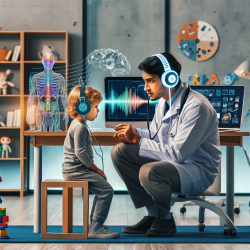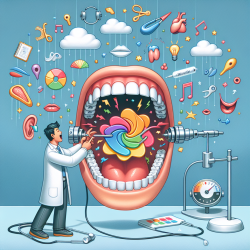Introduction
Specific Learning Disorder (SLD) is a neurodevelopmental condition characterized by difficulties in academic skills such as reading, writing, and mathematics, despite adequate intelligence and education. Recent research, including the study "Vestibular Evaluation of Children Diagnosed with Specific Learning Disorder," suggests that vestibular dysfunction may play a role in the symptoms often observed in SLD, such as postural instability and motor coordination issues.
Key Findings from the Research
The study conducted a vestibular evaluation on 30 children diagnosed with SLD and 30 healthy controls. Significant differences were found in several vestibular tests:
- Pathological findings in optokinetic and head shake tests within videonystagmography (VNG) subtests.
- Higher lateral asymmetry values in the video head impulse test (v-HIT) for the SLD group.
- Differences in N1 latency, P1-N1 interlatency, and P1-N1 amplitude values in cervical vestibular evoked myogenic potential (c-VEMP) tests.
- Asymmetry values in ocular vestibular evoked myogenic potential (o-VEMP) tests.
These findings indicate that vestibular dysfunction may contribute to the challenges faced by children with SLD, affecting their balance, motor skills, and possibly their cognitive and educational development.
Implications for Practitioners
For speech-language pathologists and other practitioners working with children with SLD, incorporating vestibular evaluations into their assessments could be beneficial. Here are some ways practitioners can use these insights:
- Comprehensive Assessment: Include vestibular function tests as part of the comprehensive assessment for children with SLD to identify any underlying vestibular dysfunctions that may be contributing to their learning difficulties.
- Targeted Interventions: Develop targeted interventions that address both language and vestibular challenges, potentially improving overall outcomes for children with SLD.
- Interdisciplinary Collaboration: Collaborate with audiologists and otorhinolaryngologists to ensure a holistic approach to the child's development, considering both auditory and vestibular health.
- Further Research: Encourage further research to explore the relationship between vestibular dysfunction and SLD, and to develop evidence-based interventions that can be integrated into therapy practices.
Conclusion
The study underscores the importance of considering vestibular dysfunction in the management of SLD. By integrating vestibular evaluations into their practice, speech-language pathologists can enhance their understanding of the child's difficulties and tailor interventions more effectively. This approach not only addresses the academic challenges but also supports the child's overall motor and cognitive development.
To read the original research paper, please follow this link: Vestibular Evaluation of Children Diagnosed with Specific Learning Disorder.










